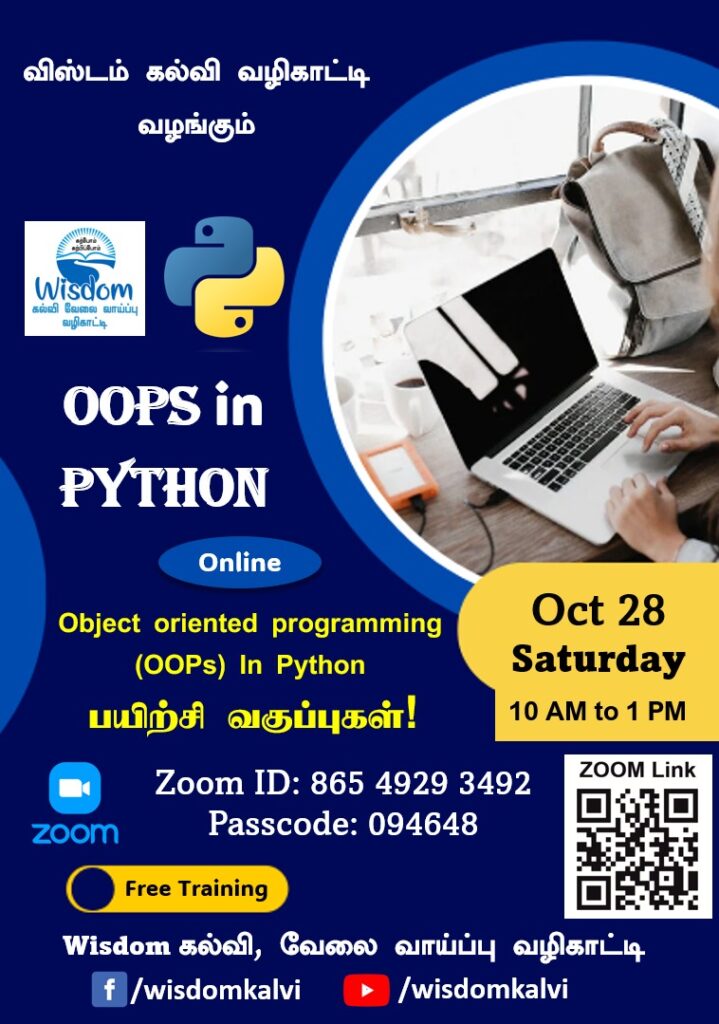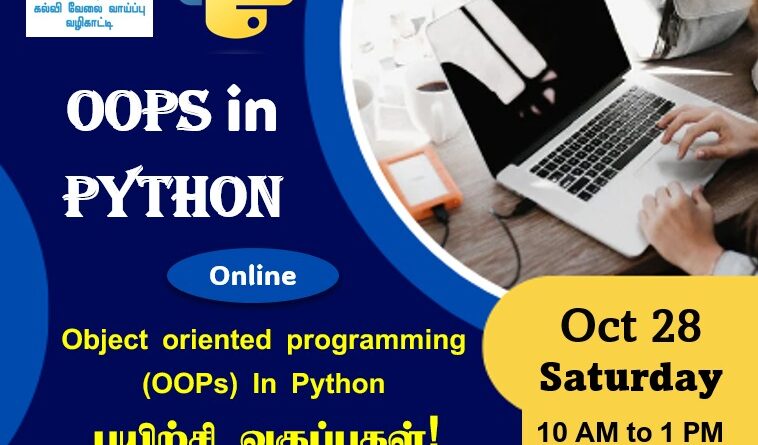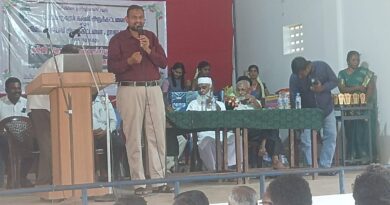Python OOPS concept

Unlock the power of programming by joining our Python class on October 28, 2023. Whether you’re a novice eager to embark on your coding journey or an experienced developer looking to expand your skill set, this class is the perfect opportunity. Our expert instructors will guide you through Python’s fundamentals, from its clean and intuitive syntax to its wide range of applications in web development, data science, and more. Don’t miss out on this chance to harness the versatility of Python and step into the world of technology with confidence.
Object-Oriented Programming (OOP) concepts in Python find applications in various domains and scenarios. Here are some common use cases for using Python’s OOP concepts:
- Software Development: Python’s OOP features are widely used in software development to create organized and maintainable code. It helps break down complex systems into manageable classes and objects.
- Web Development: Frameworks like Django and Flask use OOP principles to model web applications. Each component of a web application, such as models, views, and controllers, can be implemented as classes.
- Game Development: Game development often involves a multitude of objects with different properties and behaviors. OOP helps model game entities and interactions, making it easier to manage game logic.
- Graphical User Interfaces (GUIs): Libraries like Tkinter and PyQt use OOP to create interactive and user-friendly graphical applications. Widgets, windows, and UI elements are typically implemented as objects.
- Data Science and Machine Learning: OOP can be used to structure machine learning models and data analysis pipelines. Libraries like scikit-learn use OOP for modeling algorithms, and data processing code can be organized using classes.
- Database Design: Object-Relational Mapping (ORM) libraries like SQLAlchemy use OOP principles to model database tables as classes, making it easier to interact with databases in a Pythonic way.
- Robotics and IoT: In robotics and IoT projects, OOP is used to represent physical devices, sensors, and actuators as objects. It allows for easy control and interaction with these components.
- Simulation and Modeling: Simulations and modeling tasks often require creating classes to represent different entities and behaviors within the simulation environment.
- Testing and Test Automation: Object-oriented design can be applied to create organized test suites and harnesses for software testing. Test cases can be designed as classes, allowing for more efficient testing.
- Network Programming: Networking applications can benefit from OOP by modeling network connections, protocols, and data structures as objects. Libraries like Twisted for asynchronous network programming follow OOP principles.
- Web APIs: When building web APIs, OOP can be used to define and manage API endpoints and request/response objects. This promotes code modularity and maintainability.
- Security and Cryptography: OOP can be applied to represent cryptographic algorithms, security protocols, and access control mechanisms in a structured and modular way.
In essence, Python’s OOP capabilities are versatile and can be applied to a wide range of domains and problem-solving scenarios. They help improve code organization, readability, and reusability, making Python a popular choice for many software development tasks.


